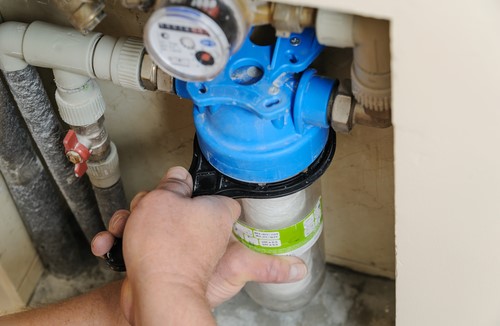Access to clean water is a fundamental human right according to the United Nations. However, trying to get clean water straight to your home might prove to be a challenge. So to overcome that, you’ve had a water tank and conditioner installed on the rooftop of your house.
But just like any other household appliance that you have, you should periodically maintain your water conditioner as well. To further convince you why you should do it, here are some of the reasons why maintaining your water conditioner is important:
1. Any of the various parts of your water conditioner could eventually wear out over time
There could eventually come a time when your water conditioner might suddenly malfunction, thus compromising your previously clean water supply. But instead of needing to replace your entire water conditioner with a brand-new one, you might want to check first if any of its parts have worn down over time. Maybe you’ll only need to change an O-ring or the conditioner valve – and save money in the process.
2. Keeping your water conditioner in tip-top shape ensures that unwanted chemicals are always removed from your water supply
The groundwater in your area generally isn’t safe to drink as it contains various contaminants including, but not limited to, chlorine, ammonia, and chloroform. If you haven’t maintained your water conditioner since you had it installed, anyone in your family might resort to drinking water straight from the tap and then fall ill after experiencing the effects that its various contaminants can bring to them.
Thus, you should always make sure to do periodic maintenance of your water conditioner so that the water running all throughout your house is safe for everyone to drink from.
3. A well-maintained water conditioner helps prevent hard minerals from building up in your plumbing
Even if the groundwater in your area has been treated so that it doesn’t have many contaminants, it may still contain large traces of hard minerals that can accumulate in your plumbing over time. This buildup of hard minerals can cause your water flow rate to decrease, and having a malfunctioning water conditioner wouldn’t do any wonders to your plumbing either.
Aside from either fixing your house’s plumbing on your own or asking for the help of a plumber to get rid of those hard mineral clogs for you, you should also check your water conditioner and ensure that it’s functioning properly. Don’t forget to regularly maintain your water conditioner so that no hard minerals damage your plumbing.
4. Periodically maintaining your water conditioner helps avoid the occurrence of scaling
Another adverse effect that hard minerals in groundwater can bring – aside from causing plumbing clogs as already mentioned above – is scaling. If you’ve noticed that your kitchen sink and bathroom drains, as well as the head of your shower, have turned brown, that’s scaling right there. You can remove the hard minerals deposited on your drains and shower head by thoroughly scrubbing them. But as long as your water conditioner isn’t working as it should, you have to expect the same scaling to happen repeatedly.
You should therefore periodically maintain your water conditioner so that your drains and shower head always look good as new – no matter how much water passes through them.
Conclusion
Clean water can sometimes be hard to come by, most especially if groundwater in your area is scarce during certain times of the day. Thus, having a rooftop water tank and conditioning system installed so that you and your family won’t run out of clean water to use is one of the wisest decisions that you could ever make.
You wouldn’t want to leave your water conditioner unchecked though as it can put you and your family’s health at risk. Instead, you should maintain your water conditioner. It’s entirely up to you if you want to maintain your water conditioner yourself or hire the services of a professional when needed.











